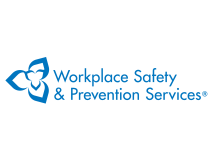Listed below are selected articles published by organizations external to the Institute for Work & Health (IWH) that mention the Institute’s work. This includes articles that report on IWH research and/or quote Institute researchers, as well as articles written by IWH researchers or staff. The organizations include general media, specialty media in the field of work injury and disability prevention, and prevention system partners. The list runs from the most recent to the oldest media mention. It is not exhaustive.

Prescription for pain: How standing takes its toll on pharmacists
Pharmacists can spend an average of eight to 12 hours per day on their feet, often in a static position. Yet, the effects of prolonged standing remain “hidden” because they develop gradually. Standing for long periods has become normalized in pharmacy culture and is overshadowed by other workplace concerns, writes Marina Rowbotham, citing research by IWH's Dr. Peter Smith.
Media outlet
Canadian Healthcare Network
Date published

Why heat makes our jobs more dangerous
A Toronto Star investigation has found that critical workplace injuries spike on the hottest days of the year. The provincial government knows that heat is a growing and potentially lethal threat to workers, but new protections it once proposed have never materialized, writes climate change reporter Kate Allen, with data analysis provided by IWH's Dr. Peter Smith.
Media outlet
The Toronto Star
Date published

New funding announced for worker safety in mining and forestry
In what was described as a strategic, provincewide collaboration, the WSIB has partnered with Workplace Safety North (WSN) and the Institute for Work and Health (IWH) to lead a proactive campaign aimed at enhancing hygiene monitoring practices and reducing exposure to harmful workplace hazards. The initiative, spearheaded by WSN, is to focus on high-risk sectors such as mining and forestry, where workers continue to face some of the highest rates of occupational illness fatalities in Ontario. WSN has developed a suite of specialized training materials and will work directly with employers and workers through hands-on coaching and real-time use of hygiene monitoring equipment. The IWH will support the initiative by applying its expertise in health and safety research to assess the effectiveness of the training programs and their impact on improving worker safety.
Media outlet
Sudbury.com
Date published

WSIB to spend $6.7M to protect workers in natural resources sectors
On Day 1 of the Mining Health and Safety Conference in Sudbury, the Workplace Safety and Insurance Board announced $6.78 million to protect workers in Ontario’s natural resources sectors, to be conducted by Workplace Safety North and the Institute for Work and Health, Lyndsay Aelick reports.
Media outlet
CTV News
Date published

Canadian study links job quality to 'deaths of despair’
Compared to those in standard employment, workers in precarious jobs are more than three times as likely to die from drug poisoning and nearly twice as likely to die from alcohol-related causes. The risk of suicide is also markedly higher—2.4 times greater for women and 1.7 times greater for men in precarious work, reports Shane Mercer, based on a webinar presentation by IWH associate scientist Dr. Faraz Vahid Shahidi. The findings challenge the notion that having any job is enough to safeguard health, instead pointing to job quality as a critical, and often overlooked, determinant of life expectancy.
Media outlet
Canadian Occupational Safety
Date published

Zero safety incidents is possible and the investments to get there pay off
In a column that's part of the Globe and Mail Careers’ Leadership Lab series, Siemens Canada president and CEO Faisal Kazi makes the case to strive for zero safety incidents. He cites IWH research showing each work injury on average costs manufacturing employers $39,000, as well as IWH findings that the return on safety investment in manufacturing is 24 per cent, largely from productivity gains and reduction of workplace injury costs.
Media outlet
The Globe and Mail
Date published

Workers Health & Safety Centre MENU enter search term heresubmit search Search Why a more accurate picture of work-related suffering matters
Findings from the Institute's study on claim suppression were among those cited in this column highlighting the under-reporting or under-recognition of work-related injuries and fatalities. Without a more accurate picture of work-related suffering, much needed workplace and government interventions will be stalled or fail to materialize altogether, the column states.
Media outlet
Workers Health & Safety Centre
Date published

Study confirms: Excellence program helps small businesses make positive OHS change
According to a study by the Institute for Work and Health (IWH), small businesses participating in health and safety incentive programs, such as the Workplace Safety and Insurance Board (WSIB) Health & Safety Excellence Program (HSEp), are better able to make positive health and safety changes in their workplace, despite facing challenges like limited time and resources. Participants in these programs achieve significant benefits, such as increasing health and safety awareness and effective implementation of occupational health and safety (OHS) policies. However, small businesses often require additional support due to resource constraints and limited OHS knowledge.
Media outlet
Workplace Safety & Prevention Services
Date published
Link to source

Supervisor competence and support critical for safer, healthier workplaces
Competent and supportive supervisors can help reduce injuries experienced by workers, especially when supervisors are properly trained, states article that cites research by the Institute for Work & Health (IWH). It found that workers most likely to suffer an injury were those who reported that their supervisors were unaware of hazards and/or didn’t provide reasonable protection.
Media outlet
Workers Health & Safety Centre
Date published

Study: Pain levels drive workers’ opioid use after injuries
Severe pain is the main factor associated with opioid use after a work-related injury, regardless of the employee’s return-to-work timeline, a recent study out of Canada suggests. Findings show that 35.6 per cent of the workers used opioids more than once in the past year. However, those who experienced severe post-injury pain were nearly three times more likely to use opioids than the participants who had mild or zero pain.
Media outlet
Safety+Health
Date published